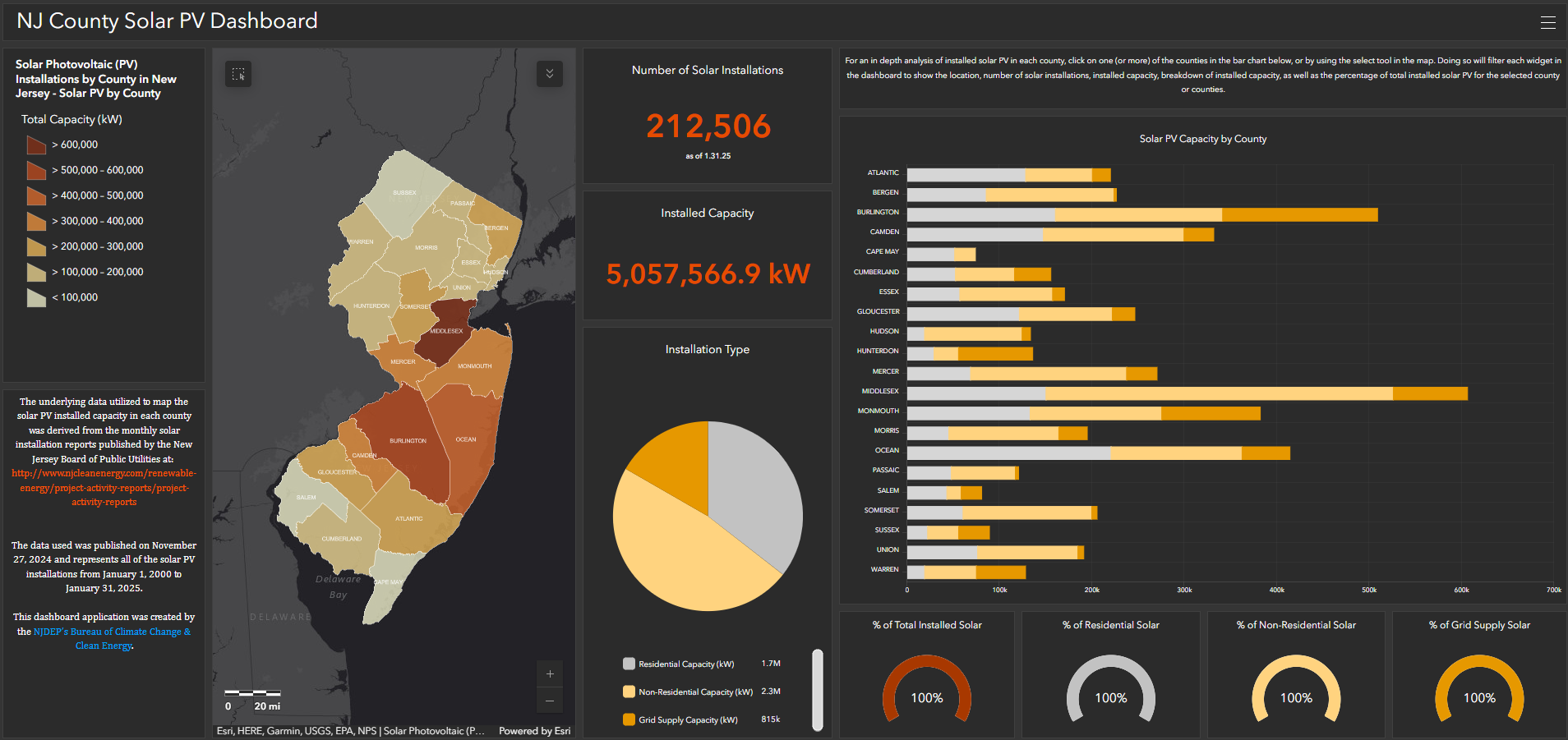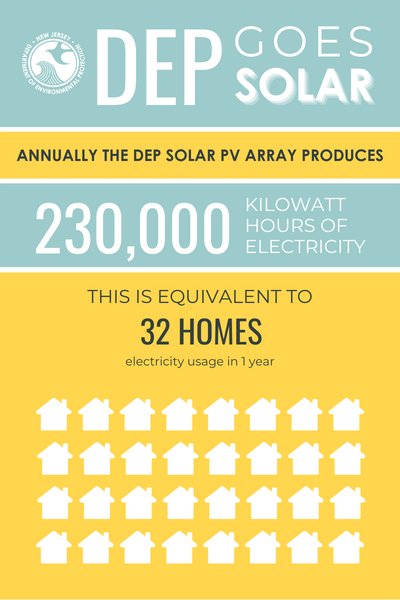
SOLAR
How Solar Power Works
Solar power technologies harness the energy from the sun’s light and converts it into electricity. Solar photovoltaic panels, (Solar PV panels), are made up of individual cells made of silicon or other special material. When the sun hits the solar panel the photons from the sunlight are absorbed by the cells, creating an electric field and causing electricity to flow. This direct current (DC) must be converted to alternating current (AC) by a device called an inverter, allowing that AC electricity to power your home and maintain connection to the local utility grid for when the solar system is not producing enough power, such as at night or during cloudy weather.
Residential and Non-Residential solar systems are typically net metered, meaning when the solar system produces more power than your facility is using, your electric meter will spin backwards, and your account will be credited for the excess power sent back to the local grid. Grid supply solar systems, often large-scale utility projects, send the electricity directly into the grid; there is no on-site destination for the electricity.

Sunlight hits solar PV panels on a roof.

Solar panels transform energy from the sun into direct current (DC), which flows to an inverter.

The inverter converts the electricity produced by the solar panels from DC to alternating current (AC).

Energy from converted AC is used to power your home.
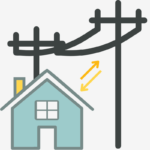
A bi-directional utility meter measures energy used from the electric grid and excess energy produced from your solar panels.
Why You Should Choose Solar in New Jersey
PROTECTS THE ENVIRONMENT
Compared to fossil fuel-based energy sources such as coal, gas, oil and nuclear, solar power and other renewable energy sources do not have a finite reserves. They are just as available as the sun from which they originate and adapt to natural cycles, hence their name “renewables”. This makes solar an essential element in transitioning to a cleaner power sector, healthier environment and improved public health.
CREATES GREEN JOBS
The growth of solar energy in New Jersey has created thousands of jobs in sales, installation, manufacturing, and financing. By investing in solar, you’re also investing in a new job market, supporting your local economy.
SAVES MONEY
As a homeowner or business owner, installing solar PV panels can help you reduce your monthly electricity bill and benefit from significant savings long term.
In New Jersey, there are state incentives available to help lower the overall cost of switching to solar energy. Read more about our state and federal incentives on our Incentives page.
How to Get Started Installing Solar on Your Home or Business
The New Jersey Clean Energy Program provides a process guide for getting started on going solar.
For more information, consumer resources and to learn about the different financing options for solar, consult the Department of Energy’s Homeowner’s Guide to Going Solar webpage.

Current State of Solar in New Jersey
New Jersey is a national leader with regards to installed solar PV capacity, with more than 5 gigawatts (GW) from over 210,000 individual solar PV installations. New Jersey has an interactive Solar PV dashboard that provides a summary of solar PV installations in New Jersey’s counties. According to the Solar Energy Industries Association (SEIA), New Jersey is ranked 10th in the United States for total cumulative installed solar PV capacity as of the third quarter of 2024, behind California, Texas, Florida, North Carolina, Arizona, Nevada, Georgia, New York, and Virginia.
Solar Regulations in New Jersey
Below is a comprehensive list of the regulatory actions New Jersey has taken in recent years to implement solar power across the state.
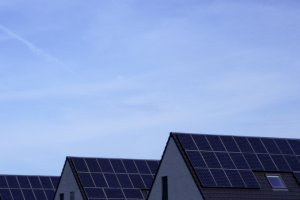
SOLAR ACT OF 2012
In July of 2012, L. 2012, c. 24 (‘Solar Act’) was signed into law. The Solar Act amended certain aspects of the statute that governs the generation, interconnection, and financing of renewable energy and mandated that 4.1% of electricity sales must come from solar by 2028.
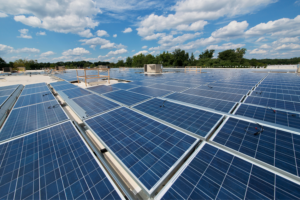
CLEAN ENERGY ACT OF 2018
In May of 2018 Governor Murphy signed the Clean Energy Act (‘Clean Energy Act’) P.L.2018, c.17. The Clean Energy Act updated and accelerated the solar requirement to 5.1%, which the state attained in April 2020. That milestone triggered the closure of the Solar Renewable Energy Credit (SREC) program, the primary incentivization vehicle for solar in New Jersey for over a decade, to new applications.
COMMUNITY SOLAR
The Community Solar Energy Pilot Program enables utility customers to participate in a solar energy project that is not on their property.
The first year of the pilot program resulted in conditional approvals to 45 community solar projects totaling almost 78 MW of capacity.
The second year of the pilot program resulted in 105 conditional approvals totaling almost 165 MW of capacity.
Instead of conducting a third pilot year, the BPU will be making the program permanent with rules and megawatt targets to be announced.
To support the Community Solar Energy Pilot Program the Bureau of Climate Change and Clean Energy has developed a Community Solar PV Siting Tool to help solar developers, municipalities and interested stakeholders find locations to site community solar arrays. Visit our Solar Siting webpage to learn more about the tool and BPU’s Community Solar webpage to learn more about the program.
TRANSITION INCENTIVE PROGRAM
On May 1, 2020, the solar Transition Incentive Program was launched as the interim program while the Solar Successor Program was being developed by the New Jersey Board of Public Utilities (BPU); it was closed on August 27, 2021.
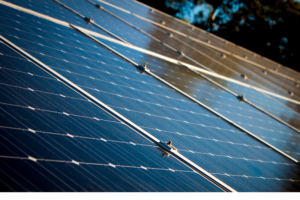
SOLAR PANEL RECYCLING INITIATIVES
Given that solar panels contain a number of hazardous materials and that their useful lifespan is long but still limited, policy makers in New Jersey have passed a law which begins the process of finding an appropriate pathway for old solar panels and associated materials and structures.
Under a law passed in 2019 a commission has been established the ”purpose of [which] shall be to investigate options for recycling and other end-of-life management methods for photovoltaic and other solar energy generation structures, and to develop recommendations for legislative, administrative, or private sector action… The Department of Environmental Protection may adopt, pursuant to the ‘Administrative Procedure Act,’ P.L.1968, c.410 (C.52:14B-1 et seq.), rules and regulations based on the recommendations contained in the report submitted by the ‘Solar Panel Recycling Commission,’ established pursuant to section 1 of this act, concerning recycling or other end-of-life management methods for photovoltaic and other solar energy generation structures.” The report has been published and is called Report of Investigation of Recycling and other Management Methods for Solar Panels, and Recommendations by the New Jersey Solar Panel Commission.
The New Jersey Department of Environmental Protection (DEP) also has a special role in these initiatives given that the Department’s Commissioner, or designee, will have a seat on the nine member commission, the Department will provide staff support to the commission, the required report and other documentation will be published on DEP’s web site, and DEP will be the department to write and adopt any rules based on the recommendations of the commission.

SOLAR ACT OF 2021
On July 9, 2021, Governor Murphy signed the Solar Act of 2021 (‘Act’), directing BPU to double the growth of the existing solar program, incentivizing up to 3,750 megawatts (‘MW’) of solar generation by 2026 (750 MW annually).
SUCCESSOR SOLAR INCENTIVE PROGRAM (SuSI)
To implement this increased target, the Act, followed by Board of Public Utility’s July 28, 2021 order implementing the program now known as the Successor Solar Incentive Program, ‘SuSI Program’, created two parallel incentive structures:
ADMINISTRATIVELY DETERMINED INCENTIVE (ADI)
ADI uses fixed incentives which incents ‘net metered’ facilities 5 MW and less and ‘community solar’ facilities.
COMPETITIVE SOLAR INCENTIVE (CSI)
The second, which will be administered via a competitive bid system, will be known as the Competitive Solar Incentive (CSI) Program and will incent ‘grid supply’ solar facilities and net metered facilities over 5 MW.
Based on July 2023’s CSI solicitation award announcement, BPU staff determined that all of the bids exceeded the confidential price cap set by the Board, and therefore recommended that the Board not award any projects in this solicitation. Following robust interest in the solicitation, staff recommends the Board conduct the next solicitation with pre-qualification opening on November 27, 2023, and the solicitation will be closed to bids on February 29, 2024. The new solicitation will maintain the same tranche procurement targets as the first. To follow the CSI development and award process, and BPU solar proceedings more generally, visit BPU’s solar proceedings page.
As with the previous program, a megawatt generated under these programs will be issued renewable energy credits, this time called SREC-II, referencing the original Solar Renewable Energy Credit (SREC) program.

DUAL-USE SOLAR ENERGY PILOT PROGRAM
In July 2021, a law was enacted to pilot the installation of solar panels on agricultural lands. An agreement with the Rutgers University Agrivoltaics Program (RAP) is in place to administer the program.
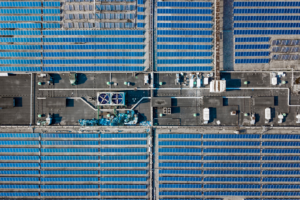
SOLAR READY WAREHOUSES
In November 2021, a law was enacted to require all new warehouses without completed permit approvals by July 1, 2022 to be solar ready.

REMOTE NET METERING
On December 18, 2024, per P.L.2018, c.17 (C.48:3-87.12) , the Board of Public Utilities established a Remote Net Metering Application and Approval Process for the Remote Net Metering market segment under the Administratively Determined Incentive program. Remote Net Metering allows government entities to install a solar array, on or off-site, up to 5 MWs dc, via aggregating electricity usage from facilities within the same electric distribution service territory. The Remote Net Metering allows for up to fifty (50) megawatts of solar for each of the five years after the establishment of the SREC-II program.
Solar Siting in New Jersey
SOLAR SITING ANALYSIS
For larger solar projects it is critical they are properly sited to protect open space, natural lands and ecosystems. To this end, the DEP has recently published a new report and siting tool to aid local communities and potential solar developers in planning for solar installations by distinguishing between lands where the department encourages solar development from those where the department discourages solar development.
New Jersey is number two in the United States in installed solar PV capacity per square mile therefore this Solar Siting Analysis Version 3.0 is timely as it provides the DEP, local communities and potential solar developers with state-level guidance on siting solar PV projects.
The previous version, the Solar Siting Analysis Update (2017) is available for download here.
The original version of the Solar Siting Analysis (2012) is available for download here.
Questions or Comments? Reach us at solar_siting_analysis@dep.nj.gov.
SOLAR SITING TOOLS
In addition to releasing a Solar Siting Analysis Version 3.0 report, the DEP developed a story map containing an in depth overview of the analysis as well as an interactive web mapping application that illustrates the Department’s preference for siting solar PV projects in the state based on the SSA v3.0.
SOLAR PERMITTING
Before installing a large-scale non-rooftop solar project, it is recommended to schedule a meeting with the DEP’s Office of Permitting and Project Navigation to determine what permits may be required and to identify potential issues.
Below you can find a Guidance Document for the Construction of Solar PV Arrays. This document is a DEP resource for solar developers in New Jersey, outlining when to coordinate with the Office of Permitting and Project Navigation.
SOLAR ON LANDFILLS
The DEP Solid & Hazardous Waste Management Program has released a Guidance Document meant to help guide developers through the process of obtaining the necessary DEP permits for installing a solar array on a properly closed landfill in New Jersey.
Municipalities and developers are able to stack existing incentive programs offered by the New Jersey Economic Development Authority and the Board of Public Utilities’ New Jersey Clean Energy Program to convert existing landfills into new solar facilities.
SOLAR FACILITY POLLINATOR-FRIENDLY STANDARDS
The DEP, in accordance with the Solar Act of 2021, developed Standards for use of pollinator-friendly native plant species in grid supply solar facilities. These standards will be applied to grid supply solar facilities and net-metered non-residential solar facilities greater than 5 Megawatts. These standards however can be leveraged by any ground mounted solar array interested in stemming the loss of New Jersey’s pollinator habitat.
FEDERAL SOLAR SITING GUIDANCE
The Environmental Protection Agency (EPA) is encouraging renewable energy development on current and formerly contaminated land and mine sites when it is aligned with the community’s vision for the site. EPA’s project, called the US EPA RE-Powering America’s Land Initiative identifies the renewable energy potential of these sites and provides other useful resources for communities, developers, industry, state and local governments or anyone interested in reusing these sites for renewable energy development. In addition to mapping tools, the Re-Powering America’s Lands Initiative site also contains site data, guidance on developing sites once they are identified, specific site data, success stories and training events.
NEW JERSEY COMMUNITY SOLAR PV SITING TOOL
To support the BPU’s Community Solar Energy Pilot Program the Bureau of Climate Change and Clean Energy has developed a Community Solar PV Siting Tool to help solar developers, municipalities and interested stakeholders find locations to site community solar arrays.
For background on using the Community Solar PV Siting Tool, please refer to our Guidance Document.
NJDEP SOLAR ARRAY
In July 2012, the DEP installed a 184 kilowatt (kW) Solar Photovoltaic (PV) array on the roof of its Headquarters at 401 East State Street in Trenton, New Jersey. The Solar PV array consists of 784 panels that are each 235 watts, and is net metered, allowing the electricity produced to directly power the DEP building. On average this Solar PV array produces over 230,000 kW/hours annually. This enough to power about 32 homes for a full year! DEP’s Solar PV array is one of a handful of Solar PV systems at New Jersey State owned facilities.
The performance of the DEP Solar PV array is tracked through this online monitoring dashboard and on a monitor located in the lobby of the DEP headquarters. Both are interactive and display live system performance, equivalent homes powered, and avoided greenhouse gas emissions for the day, month and year and more.

